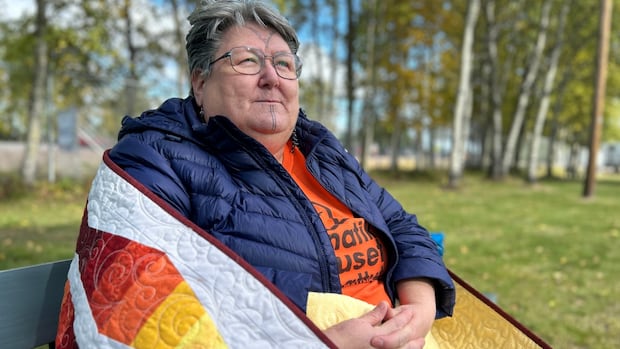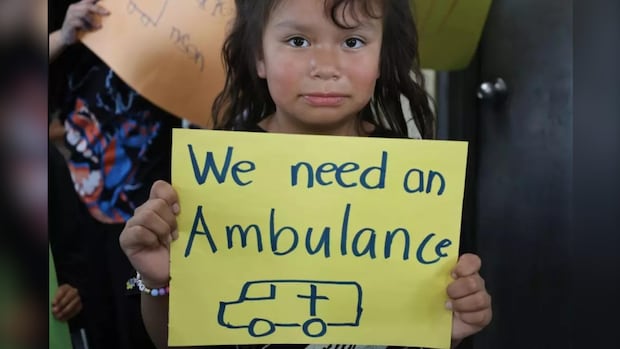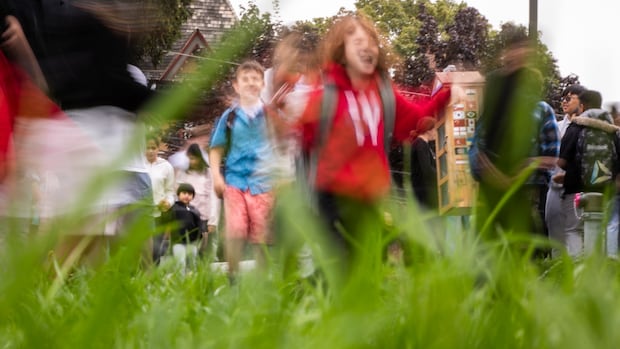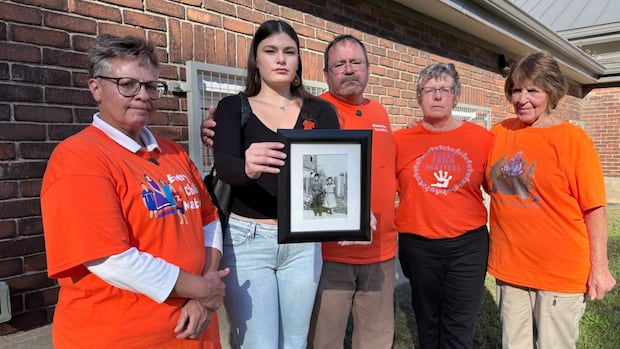Open this photo in gallery: Visitors listen to speeches at the unveiling of the former Mohawk Institute Residential School as a museum on the National Day for Truth and Reconciliation.Alex Jacobs-Blum/The Globe and Mail
Among the very first group of visitors to walk through the doors of the old Mohawk Institute − the former residential school that officially reopened as a museum this week − was 68-year-old Beverly Albrecht. Unlike most of the visitors, Ms. Albrecht didn’t require the assistance of signs or a guide to find her way around.
That’s because every inch and step of this building was imprinted on her from the time she was a child. From 1966 until 1970 – from the time she was seven until about 11 – Ms. Albrecht, a member of the Cayuga Nation, was a residential school student here. And it’s where, in the 1940s, Ms. Albrecht’s mother, too, was a residential school student.
As she made her way through the front halls of the building, Ms. Albrecht pointed out the many abuses that she and her mother endured here − abuse that, even decades later, the family is still working to unravel.
“My number was 66,” she said. “They didn’t call us by our names. They called us by our numbers.”
The museum officially opened its doors on Tuesday, the National Day for Truth and Reconciliation, on the site of what was once Canada’s oldest and longest-running residential school in Brantford, Ont. The Mohawk Institute Residential School was open from 1828 until 1970, and attended by an estimated 15,000 Indigenous children.
What to know about National Day for Truth and Reconciliation, and Orange Shirt Day
It’s one of just a handful of remaining residential school buildings in this country, and the only one that’s been fully restored. And that’s owing, in large part, to survivors like Ms. Albrecht.
Back in 2013, the Woodland Cultural Centre, which operates the site, polled the local community, including the nearby Six Nations of the Grand River reserve, on what to do with the old school building. The response from local groups and survivors alike was that the history should be preserved, and that the building be used to educate the public.
The process to restore the building began even before the Tk’emlúps te Secwépemc First Nation in British Columbia announced in 2021 that ground-penetrating radar had identified suspected unmarked graves at the former site of the Kamloops Indian Residential School, which renewed awareness about residential schools.
“For so many years, the survivors were doing so much work of telling the stories,” said Jake Jamieson, the artistic director at Woodland Cultural Centre and a community member of Six Nations of the Grand River. “Now, the building can do some of that work.”
As Ms. Albrecht made her way through the museum Tuesday morning, there were signs everywhere of the building’s ugly history.
Open this photo in gallery: Survivor Beverly Albrecht stands alongside other residential school survivors as they are honoured for their bravery.Alex Jacobs-Blum/The Globe and Mail
Toward the front hallway was the “isolation cell,” a dark, closet-sized concrete space where students were locked up for long periods. On the second floor was the bathing room, where children were made to line up, in full view of one another, for baths. And throughout the building were carvings etched into the walls – children carving their stories and names into the building, as remembrance.
It was at this school, Ms. Albrecht said, where both she and her mother learned behaviours that would plague them well into their adulthoods. Both mother and daughter, she said, coped with the abuse they endured however they could. For Ms. Albrecht, this meant alcohol, and often, violence.
Initially, Ms. Albrecht, like her mother, passed on the abuse she received to her own kids.
“It took me a long time to be close to them, even though they were my own kids,” she said. “But now, when I see my grandchildren, I hug them.”
Joining Ms. Albrecht for the tour that day was her friend Celine Mackenzie Vukson, 72, a member of the Tlicho Nation in the Northwest Territories and also a residential school survivor. As the pair walked through the museum, they swapped stories of their experiences.
Open this photo in gallery: Survivor Celine Mackenzie Vukson, left, shares a memory with another survivor at the former Mohawk Institute Residential School.Carlos Osorio/Reuters
As they passed the old headmaster’s office, Ms. Albrecht recalled the time she was punished with the strap. It was after her first escape attempt, where she tried to take off running, but was caught just a few blocks away. She was just eight years old.
As they passed the area that was once the boys’ sleeping space, the two paused. “You had to make your bed like that,” said Ms. Albrecht, pointing at the single bed, perfectly made, its sheets stretched into stiff right corners.
Ms. Mackenzie Vukson nodded. It was the same at her NWT school. “There couldn’t be a single wrinkle.”
The students at her school were often too afraid to leave their beds at all, Ms. Mackenzie Vukson said. “It was dangerous to even get up and out of bed to use the bathroom.”
Open this photo in gallery: Six Nations Chief Sherri-Lyn Hill addresses a crowd of people in orange shirts at the former residential school.Alex Jacobs-Blum/The Globe and Mail
Downstairs, in the old dining hall, Ms. Albrecht leaned over to touch one of the plastic plates set along the wide wooden table. They used to call this room the “mush hole,” she said, because of how often they were fed oatmeal.
“We were always hungry,” Ms. Mackenzie Vukson said.
“Always hungry,” Ms. Albrecht repeated.
This, Ms. Albrecht added, despite a small orchard of fruit trees planted right along the front of the school property. The apple trees were right there, practically within arm’s reach. But the children were forbidden from eating the fruit.
Now, she said, “I love eating apples.”
As the two women wrapped up their tour, they stood for a few moments in the dark, reflecting on what they’d just experienced.
Ms. Mackenzie Vukson leaned over to rub her friend’s arm. She offered her a hug. “We couldn’t even hug each other back then,” she said. “It wasn’t safe.”
Ms. Mackenzie Vukson said she felt grateful to be here that day, to remember those who didn’t survive. And even more grateful to see this exhibit, and this testament to their community’s strength and resilience.
“Coming here, I feel uplifted,” she said. “We made it. We survived.”
[SRC] https://www.theglobeandmail.com/canada/article-mohawk-institute-residential-school-reopens-as-a-museum/
 Visit the website
Visit the website





